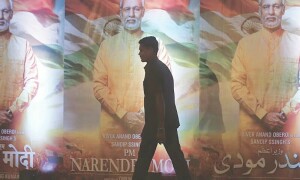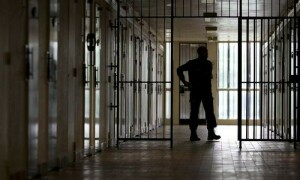| Party position in National Assembly | ||||||||
| Party | Punjab | Sindh | NWFP | Balochistan | Islamabad | Fata | Women/ Minorities |
Total |
| Allocated seats | (148) | (61) | (35) | (14) | (02) | (12) | (60/10) | (342) |
| PPP | 45 | 29 | 10 | 04 | — | 22/03 | 113 | |
| PML-N | 59 | — | 04 | — | 02 | 16/03 | 84 | |
| PML-Q | 28 | 05 | 06 | 03 | — | 11/02 | 55 | |
| ANP | — | — | 10 | — | — | 03/01 | 14 | |
| MQM | — | 19 | — | — | — | 05/01 | 25 | |
| PML-F | 01 | 03 | — | — | — | 01/00 | 05 | |
| PPP-S | — | — | 01 | — | — | — | 01 | |
| Ind/Others | 14 | 04 | 01 | 04 | — | 10 | — | 33 |
| MMA | — | — | 03 | 02 | — | — | 02/00 | 07 |
| Total | 147* | 60** | 35 | 13*** | 02 | 10**** | 60/10 | 337 |
| * Election in
NA-119 postponed. ** Election in NA-207 postponed. *** Results in NA-269 awaited. **** Election in NA-37 and NA-42 postponed. |
||||||||
| Note: Women and minorities seats have been calculated in accordance with the formula given in the Constitution. There are 35 reserved women seats in Punjab, 14 in Sindh, 8 in NWFP and 3 in Balochistan. The parties are given women seats in proportion to the general seats won in each province. The 10 reserved minorities seats are distributed among the parties in proportion to the overall seats secured by them.— Prepared by Amir Wasim | ||||||||
 ISLAMABAD, Feb 19: As nearly complete results of Monday’s general election gave the Pakistan People’s Party (PPP) and the Pakistan Muslim League-N (PML-N) a combined majority in the National Assembly, the victims-turned-victors on Tuesday emerged numerically qualified to form the next governing coalition.
ISLAMABAD, Feb 19: As nearly complete results of Monday’s general election gave the Pakistan People’s Party (PPP) and the Pakistan Muslim League-N (PML-N) a combined majority in the National Assembly, the victims-turned-victors on Tuesday emerged numerically qualified to form the next governing coalition.
The PPP won 88 and the PML-N 65 of the 267 general seats of the 342-seat lower house for which the results were declared from a total of 268 contested in the vote that humiliated President Pervez Musharraf’s loyalists in the previously ruling Pakistan Muslim League (PML) and some allied groups.
The present figure in itself does not constitute a majority, but the addition of an estimated 44 reserved seats for women and non-Muslim minority communities the two party will get in proportion to their general seats and expected support from other anti-Musharraf parties and independents will take them above the magical figure of 172 needed to elect a prime minister.
The PPP is expected to get 22 women’s and three minority seats and the PML-N 16 women’s and three minority seats, with the PML to get the third largest share of 11 women’s and two minority seats to add to its general seats’ total of 42 — with the total reaching 55.
While one result was still awaited for a National Assembly seat from Balochistan, the Muttahida Qaumi Movement (MQM) had won 19 general seats, all from Sindh, and was expected to be awarded five women’s and one minority seats.
The Muttahida Majlis-i-Amal got five general seats in the NWFP and Balochistan with the possible share of two women’s seats, the PML-F four general seats with the possible addition of one women’s seat, the PPP-S only one general seat in the NWFP and a total of 33 general seats went to independents and others.
Elections for three National Assembly seats and eight of 577 general seats of the four provincial assemblies were postponed owing the death of a candidate or law and order problems.
One of these postponements was in a National Assembly constituency in Sindh for which PPP leader Benazir Bhutto was a candidate before she was assassinated on Dec 27 after she had addressed a campaign rally at Rawalpindi’s Liaquat Bagh.
If the victorious parties follow political logic and the pre- and post-poll statements of their leaders about possible cooperation, the PPP must lead a ruling coalition at the centre as well as in the Sindh province, the PML-N in the most populous Punjab province, the Awami National Party (ANP) in the North-West Frontier Province, and the PML-Q, for a consecutive term, in Balochistan province.
Both the major parties, which staged a shock comeback in Monday’s elections after remaining sidelined for more than eight years by the October 1999 seizure of power by General Musharraf, are due to discuss the outlines of their possible cooperation in meetings of their central executive committees and between themselves in the next two days in Islamabad. They are also likely to contact the leaders of other prospective partners like the NWFP-based ANP, which too has seen a revival after a freak sweep by religious parties in the previous 2002 elections had sent the secular party in a political wilderness in its traditional power base.
In line with the PPP’s cautious approach from the start, even at the cost of losing votes, party co-chairman Asif Ali Zardari on Tuesday only reiterated pledges about having an independent judiciary and calls for release of sacked superior court judges still under detention, but remained ambiguous about demands for their restoration.
But PML-N leader Nawaz Sharif told a news conference in Lahore that the restoration of the sacked judges and undoing everything else done under the extra-constitutional emergency declared by the president on Nov 3 in his now abandoned capacity as army chief would be a pre-condition for a coalition.
The president rules out such a possibility even though the opposition election sweep has clouded his own political future only two months after beginning another five-year term of office following a controversial election that caused his second and the most damaging clash with the superior judiciary within nine months.
But Mr Sharif, whose public reiteration of a hard line about the judiciary just before the coalition talks must cause some worries for an ambiguity-preferring PPP, avoided making his party’s oft-repeated demand that Mr Musharraf resign from what he regards as an illegal presidency and said a ruling on the legality of his candidacy must come from a restored Supreme Court bench whose hearing of challenges from rivals was blocked by the Nov 3 emergency under which about 60 judges of the superior judiciary lost their jobs for refusing or not being called to take oath under a Provisional Constitution Order (PCO) issued to replace the constitution.
The judiciary’s is likely to be a tough issue to resolve while the ANP, though swearing by the principle of the independence of judiciary, gives more priority to issues of combating terrorism in the NWFP, provincial rights in a federal structure, and giving a new name to the province to replace the present one that was given by the British colonial rulers as only an indication of its geographical location in undivided India.
The PPP, which has emerged as the single largest and the only party with substantial representation in all of the country’s four provinces, has also to decide whether it would be politically wise to seek a coalition with the erstwhile PML and Musharraf ally Muttahida Qaumi Movement in Sindh or go it alone, and to accept a share in a PML-led coalition in Balochistan.
















































Dear visitor, the comments section is undergoing an overhaul and will return soon.